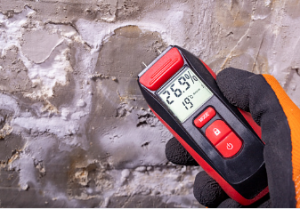Choosing a Moisture Meter
The Instrument-Choice moisture meter measures moisture levels in wood and other building materials from 0 to 60 per cent. Its large, backlit LCD screen makes it easy to read in dim lighting. The “Hold” button freezes the reading on the screen. A memory function stores previous readings. The price range ranges from about $50 to $300. Here are some things to consider when buying a moisture meter.
There are several types of moisture meters. A pin-type moisture meter is typically the most affordable option. It is simple to use and measures the moisture content of a surface or total depth. These meters measure moisture content based on the amplitude of the emitted radio waves. Water, however, decreases the frequency of these waves, so it is often difficult to determine where a stain is coming from. An accurate moisture meter can determine if the stain is due to water or not.
Pin-type vs. pinless
When choosing a moisture meter, you’ll find two primary types: Pin-type and pinless. The former measures moisture in the air and requires a pin to be inserted into the material. Pin-type meters are best for measuring the moisture content of joists, timber floors and firewood. Still, they are not ideal for measuring the moisture content of plasterboard walls, furniture, and cabinetry.
When deciding between a pin-type and a pinless instrument, consider the following factors: sensitivity and accuracy. A pin-type instrument measures moisture in materials with a resistance of approximately one-thousandth of one per cent. This accuracy is superior when moisture is detected on the wood-bearing surface. A pin-type instrument is also less expensive, so that you might save money on an otherwise specialized instrument.
A pinless instrument-choice moisture meter should be able to measure both softwood and hardwood materials. A pinless instrument cannot measure the thickness of a bale, as it is several feet thick. In such cases, a pin-type instrument is the best choice. If you don’t want to use a pin-type instrument, you can purchase a pinless one compatible with both types.
Accuracy
When choosing a moisture meter, it is crucial to look for one with high accuracy. Some instruments can only provide results to a few decimal places. These models are best suited for sensitive test subjects, such as wood. For instance, a digital instrument can measure the moisture content of wood within a range of five to fifty per cent. A high accuracy rate will be crucial for many types of woodwork projects.
Another consideration when selecting a moisture meter is depth accuracy. Some meters offer a maximum depth reading of 5/16″, while others can measure as much as four inches. A pinless moisture meter can also provide a deeper reading. Another factor to consider is whether the moisture meter has an accessory probe. Some instruments even offer a probe for EIFS. In many cases, moisture problems in the EIFS result from poor sealant application around window frames and faulty flashing installation.
Error percentage range
One of the most critical questions for selecting a moisture meter is its error percentage range. While moisture meters vary in accuracy, the common error percentage range is about 5 per cent. Unfortunately, this value is often misleading because it is used for things other than estimating moisture content. Regardless of the error range, a moisture meter is essential for determining the amount of moisture in various materials. There are two types of moisture meters: direct reading and indirect reading.
A digital instrument will give you the highest accuracy. Digital instruments output data to a few decimal places. These are ideal for sensitive test subjects, such as wood. The maximum measurement range of a digital moisture meter is 5 to 50 per cent. Some moisture meters are compatible with a wide range of materials. If you have a specific material in mind, a moisture meter with an error range of 50% or less is necessary.
Price
When choosing a moisture meter, consider its range and maximum and minimum readings. A larger range means less precise measurements. For example, a meter ranging from 0.2 to 60 per cent may not be as helpful for DIY projects. A meter with a smaller range offers more accurate readings and is typically used in the fine carpentry and flooring industries. A more extensive range is better suited for most DIYers.
If you’re looking for a more accurate and durable meter, the Lignomat Mini-Ligno E/D moisture meter may be a perfect choice. This tool is specialized and calibrated to natural wood. It boasts a precision scale of six to 45 per cent and sharp pins to detect moisture in materials. As a result, it is an excellent choice for wood-based building projects.